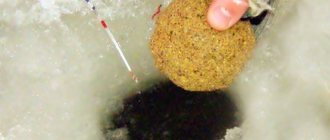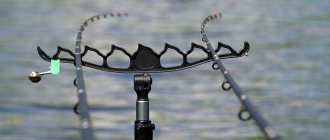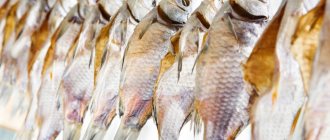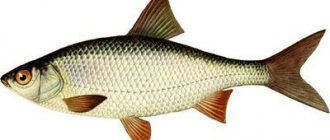Roach is one of the most common fish in Russia. Its most famous subspecies are roach and ram. They love it because it can be caught almost all year round and is very good when dried. Any experienced fisherman knows how to dry roach and how to properly salt it before drying.
If desired, anyone can make such a great snack at home. You just need to take the process seriously so that you can eat it and not fear for your health: as you know, river fish, and in particular roach, are often infected with helminths. Therefore, it is very important to achieve the salt concentration necessary for the death of the larvae, and this can be done if you follow the deadlines.
If we talk about its benefits, it is worth noting its low calorie content and the presence of vitamins such as A, B (B 1 and B 2), C, E, PP. It contains a lot of chromium, iron, phosphorus, calcium, sodium. However, you should still remember that a salty product, in principle, cannot be healthy, and only consumption in small quantities will not result in health problems.
As experienced fishermen say, it is best to dry roach in the spring, at this time it goes to spawn and is characterized by increased fat content and has not yet become saturated with the smell of mud.
It is very important that the fish is fresh
Roach can be dried in gutted or ungutted form. The advantage of the first is that without entrails, carcasses are salted faster.
If the roach is very large, it is still recommended to gut it to avoid the process of rotting. In summer you should not dry it entirely: this is due to its nutrition during this period. It feeds on aquatic greens, which decompose and make the pulp taste bitter.
Despite the fact that each fisherman has his own recipe for salting and drying roach, in general the process will always be approximately the same. In the same way, you can dry ruff, bleak, small pike, rudd, perch, asp and representatives of other species.
Stages of drying roach
The process consists of several stages: salting, soaking and drying. There are two ways to pickle – dry and brine (wet).
Brine salting
The brine that is formed when salt dissolves in the liquid that oozes from the fish is called brine. It must be drained periodically during salting to prevent bacteria from multiplying in it.
With gutting
Usually large roaches weighing about 1 kg are gutted. Rinse the roach, do not remove the scales, remove the insides, remove the gills and rub with salt outside and inside. Take an enamel bowl, pour a layer of coarse salt on the bottom, place the roach in it, cover and press down with a weight. Thanks to the oppression, cavities do not form in the carcasses, where bacteria can grow and start rotting. Place in the refrigerator for three to four days. After some time, juice will begin to release from the fish.
No gutting
In this way, only small roaches can be salted - weighing from 250 to 500 grams and measuring no more than 30 cm in length. Gutting a small roach is recommended in the summer, when the fish eats greens, which give it a bitter taste.
Before salting, whole roach should be washed under running water, but you don’t have to wash it, just wipe it with a dry cloth.
For pickling, you need to prepare enamel dishes or a stainless steel container. Sprinkle salt on the bottom and place the roach in dense rows (belly to back, head to tail). Sprinkle each layer with salt to completely cover the fish. Larger specimens are placed downward, and smaller specimens are placed upward.
For salting you need to use only coarse salt.
Cover the roach with something flat and press it down with a weight (brick, jar of water, stone). Place the container with the fish in the refrigerator so that the flesh does not spoil, where the salt has not yet penetrated, and leave under pressure for three days. After three days, the roach is washed and left for 2 hours in cold water. The process of salting roach weighing no more than 500 grams takes two days.
You can determine readiness by the firm back, yellowish-red caviar and dark gray color of the meat.
Dry salting
This salting is more suitable for larger specimens and it lasts longer than brine - up to seven days.
The roach needs to be gutted and cuts made along the ridges. The fish must be sprinkled with salt, not forgetting the bellies, and placed in wooden boxes in a row. Cover the top with cellophane film and put it in a cold room.
With this method, the juice from the fish is also released, but flows through the cracks in the box
When the fish is salted, it must be rinsed under water and left to soak.
Soaking
After two days, the fish is washed under running water and then soaked for two hours.
It is believed that soaking lasts the same number of hours as the days the fish was salted.
The soaking time also depends on what kind of fish you like best: lightly salted or salted. In the first case, you need to keep the roach in the water longer, in the second, take it out earlier.
Drying (drying)
When the soaking is over, the water is drained and the fish is dried, spread out on paper for half an hour. Then the carcasses are hung out.
Hang the fish head up with a string through its eyes
Fish should be dried in a shaded place with a draft. The optimal air temperature for drying is about 20⁰C.
In summer, hanging carcasses need to be protected from flies. To do this, the fish are dipped in three percent vinegar and greased with vegetable oil or protected with gauze or a mosquito net. It is best to hang roaches in the evening, when there are no more flies. The carcasses will dry out overnight, and in the morning the flies will no longer harm them.
In winter, the kitchen in the apartment is suitable for drying roach. The fish is suspended over a gas stove.
Drying roach lasts from one week to four. After drying under natural conditions, the roach should ripen within three to four weeks. Small fish (up to 500 grams) can be eaten immediately after drying, skipping the ripening stage.
Dried roach should be stored in a fabric bag in a cool, ventilated room.
Dry method
If you choose the dry method, then add salt to the bottom of the dish. Each fish is rubbed with salt, which must be poured into the belly, gills, mouth, and incision on the back. The crucian carp must be placed in a container: first the large ones, and then the small ones. All layers are covered with salt. Small crucian carp are covered with a lid and placed in the refrigerator for 1-3 days. Large fish should be placed under pressure in a cool place. To avoid bacteria, the liquid that appears under pressure is drained daily.
After 1-3 days, the fish are washed. After washing, it is soaked in water and vinegar for 30 minutes. Then it should be placed in a colander to drain and dry. If you use smoke smoke (100-150 g), the fish will have a smoked taste and aroma. There is no need to use gauze. A photo of dried crucian carp shows the appetizing appearance of the product.
Drying with added sugar during salting
Another recipe for dried roach involves using a mixture of salt and granulated sugar when salting.
For drying you will need:
- 5 kg roach;
- 1.2 kg coarse salt;
- 100 g granulated sugar.
Before salting, the fish must be cooked. It must be placed in a large container of water, for example, in a bathtub, filled with water and rinsed thoroughly.
Prepare a pan or bucket for salting roach. Mix salt with granulated sugar. Place a plastic bag at the bottom of the container and pour a little mixture of salt and sugar into it.
Make a concentrated solution from salt and boiled water and use a syringe to inject it into each carcass in the tail area, then place it in a salting container.
Place the fish in a container in layers and be sure to sprinkle with a mixture of salt and granulated sugar
Cover the laid roach on top with another layer of salt and sand. Place something heavy on the fish, such as a jar or bottle of water, cover it with film, but still allow air access to the fish, and put it in a cool place for five days. On the fourth day, remove the load, mix the roach and leave to add salt. The period can be extended upon request. When the fish is salted, soak off the salt and dry using the methods described above.
Store-bought dried roach cannot compare with home-made dried roach. It is quite possible to master the technology of its preparation, the main thing is to approach the matter with soul.
There is nothing better to go with beer than dried or dried fish, but it is very difficult to find decent fish on the shelves. Luckily, it’s easy to dry it yourself. Dried fish prepared according to this recipe at home, a recipe from ram, will satisfy the taste of the most demanding beer lover and the most sophisticated fisherman.
Step-by-step preparation
- In the ingredients I indicated the amount of salt per 1 kilogram of fish. Accordingly, if the fish is more than 1 kilogram, then you also need to take more salt.
- First, we need to gut the fish; we remove all the insides, except for the caviar, if any.
- When we got rid of the insides, we thoroughly rinse the crucian carp under cold water.
- Then we place the fish in rows in an enamel bowl and sprinkle each row with salt and leave for three days. After the time has passed, take out the fish, rinse it under cold water and leave it to drain in a colander for 2 hours. When the water has drained, hang it in a dry place and dry it in natural conditions.
- a popular type of fish. It has earned its popularity due to its taste and accessibility.
Dried _
or
dried
, goes well with drunk beer as a snack. It is very easy to prepare, so anyone can make it at home.
Before the process of salting crucian carp, it must be properly prepared for this procedure. Small ones are best suited
or
medium
sizes, since cleaning them will not take much time.
It is necessary to get rid of mucus
from the fish, thoroughly
rub
each side with salt. For convenience, you can put the fish in a small basin and cover it with salt.
Attention.
Salt must be placed in the mouth and gills of the fish.
If you take large fish from 1 kg
, then the preparation process will be
more difficult.
First, you need
to get rid of the offal
.
The belly of the fish is cut and the entrails are removed. Next, we make a cut
from the tail to the head.
This way the fish will dry out faster. There is no need to clean fish from scales
. The scales help protect the meat from exposure to sunlight and preserve fish juice.
Rinse the fish with water, thoroughly rub in the salt and place in a deep container. Leave it for five
days to marinate.
Attention.
When gutting fish, caviar may get caught. It can also be salted.
How to cook dried ram at home
If you don't like fish dried with entrails, you can gut it, but the finished product will be drier.
In any case, it is better not to remove the scales - without them, the fish will dry out too quickly and lose a significant part of its flavor.
So just rinse the fish well, especially in the gill area.
There is no specific proportion of salt for this recipe - use enough to completely cover the fish. There is no need to be afraid of excess salt: if you don’t add enough salt, it will simply go bad. Place salt in the bottom of the salting container, fill the gills of the fish with salt, place it on top of the salt and sprinkle with salt. To salt, put the fish in the refrigerator for 4-5 days (the larger the fish, the longer it needs to be kept in salt).
After 4 days, remove the fish, drain the resulting liquid and rinse the ram well. After this, fill the container with the fish with cold water and let it stand for 4 hours (the number of hours of soaking should be equal to the number of days of salting). The water should be changed periodically. Soaking will reduce the “salinity” of the fish to the desired level. To get exactly the fish you like, don’t wait all 4-5 hours, but after 2.5-3 hours of soaking, tear off the fin at the head and taste the meat.
Now it's time to hang the ram. Dried fish is one that has been dried for about two days, and if the fish is dried for more than a week, it is called dried. The ram can be hung by paper clips, passing them through the head of the fish, or strung on a wire. You can simply put it on paper, but in this case it will need to be turned over periodically.
Store the ram in paper bags in the refrigerator. It is better not to store it for too long, because over time it begins to taste bitter. And why should a tasty fish lie idle?
Salted fish is an ideal snack for beer. And to be sure of its quality and taste, it is better to salt it yourself. Find out how to salt ram.
Classic recipe for dried crucian carp
For good and quick results, they usually take small or, at worst, medium-sized fish. This simplifies the process: small fish are not gutted, the head and fins are left intact. This way the fish looks natural, while remaining juicy and fatty.
It is customary to gut large crucian carp before salting, and also leave longitudinal cuts on their backs.
Never clean fish scales. Its function is to protect against excess salt and possible drying out of the fish.
Required ingredients and equipment:
- fresh crucian carp;
- coarse salt (at the rate of 100 g per 1 kg of fish);
- sugar, herbs, garlic, spices - to taste;
- any bulky dishes (not made of metal to avoid oxidation);
- fishing line, twine or wire.
Cooking technique
Before drying crucian carp, it must be salted. To do this, live fish are killed and cleaned of entrails (you don’t have to do this). If the fish is gutted, it needs to be washed.
Dry option:
- Salt is poured evenly into the container.
- Crucian carp are rubbed with salt on each side. It needs to be poured into the mouth, gills and belly of the fish, and the dorsal incision in large specimens.
- Place the processed crucian carp in layers in a container, while it is better to place larger fish downwards.
- Be sure to sprinkle each layer with salt.
- If the crucian carp are large, then you need to install oppression on top. For example, a plate with a load (a jar of water). You just need to close the container with small crucian carp with a lid.
- Place the container with fish in the refrigerator for a couple of days. Do not forget to drain the liquid under pressure every day.
- After two or three days, the fish needs to be washed and soaked. First, drain the brine and fill the container with cold water. The number of hours of soaking the fish is equal to the number of days spent in brine.
- Afterwards, you need to drain the water and rinse all the fish well under running water, concentrating on the gills, mouth and belly.
- Then you need to keep the fish in water acidified with a small amount of vinegar for half an hour. Next, remove the crucian carp, place in a colander, and let the water drain. Leave to dry.
Wet option:
- Wet salting proceeds evenly when all fish are approximately the same size.
- The crucian carp is filled with a good salt solution. The proportions are the same: add 100 g of salt per 1 kg of fish per liter of water. To balance the taste, you can add a couple of tablespoons of sugar to the brine. The presence of a small amount of dill, dry onion or garlic would also be appropriate.
- Next, salting proceeds as with the dry version: a couple of days in the refrigerator, then washing and drying.
- Fish well prepared for drying will have dark meat, a dense back, with a slight white salt coating on the scales.
Drying crucian carp
Direct hanging of fish to dry is done in different ways. You can string fish onto a fishing line using a thick needle. You can attach crucian carp to wire hooks, threading them through the tails or eyes of the fish.
For gutted fish, the bellies and dorsal incisions are pulled apart with chopsticks or toothpicks for more efficient drying.
Often crucian carp are rubbed with a special solution that protects against insects. It can be made from one tablespoon of vinegar and two of vegetable oil. The mixture must be mixed until smooth, and then rub all the crucian carp with it.
It is better to start drying fish in the evening for gradual drying. Salted fish, as a rule, is hung in the open air, only in a vertical position.
It is important that the fish is constantly blown by the wind; for this you need to place it as high as possible from the ground
In dry and windy weather, small crucian carp can be dried in 2–3 days. If the fish is larger and weather conditions (temperature, humidity, wind) are not so favorable, then the process can last up to two weeks or more.
You can dry crucian carp in special dryers sold in fishing stores. They are a multi-tiered basket made of strong fine-grained mesh, which optimally protects the fish from insects.
At sub-zero temperatures and high humidity, you can dry fish over a gas stove with noticeably worse results.
Well-dried fish retains most of the beneficial properties and substances it contains. It will contain much less than 40% moisture, excellent low saltiness (less than 10%). The fish itself will appear transparent, very juicy, with a sweetish taste.
Store dried crucian carp in a dry place: a basket or box. Longer storage requires wrapping it in oil paper or parchment. Gutted fish can be stored for up to a year, regularly greased with vegetable oil to prevent it from drying out.
Dried crucian carp best complement the bright aroma and bitter hop taste of light beer.
Extremely dried carcasses can be ground through a meat grinder and then added to minced fish for cutlets.
Cooking dried crucian carp at home is very simple, but in the end we get a wonderful salty snack for beer. So, I’m telling you how to dry crucian carp!
I probably knew how to cook dried crucian carp since childhood. My uncle went fishing every weekend and always returned with an excellent catch, which is why I still remember those rows of fish that hung on our balcony. Now, unfortunately, he does not prepare fish so often, but sometimes I treat myself, especially in the summer. And now I want to tell you the simplest recipe for dried crucian carp at home.
Number of servings: 1-2
A very simple recipe for dried crucian carp, a recipe for Russian cuisine with photos and a step-by-step description of the cooking process. This recipe is easy to prepare at home in 0 minutes. Contains only 275 kilocalories.
- Difficulty: Very simple recipe
- National cuisine: Russian cuisine
- Type of dish: Main courses
- Preparation time: 11 minutes
- Cooking time: 0 min
- Calorie count: 275 kilocalories
- Number of servings: 12 servings
- Occasion: For lunch
What kind of fish is suitable?
Small and medium-sized fish are suitable for salting, since large ones will not be salted completely and will remain raw inside, which will affect the taste and increase the likelihood of contracting intestinal infections when eaten.
Instead of ramming, you can use any other small fish for salting, for example, rudd, white bream, ruffe, sabrefish, and minnows. Medium fat content is optimal, since at low fat content the fish will turn out very dry, and at high fat content it will have an unpleasant taste.
Rules for drying rams
After salting and soaking is completed, the fish will need to be dried. To do this, twist a double thread, string a salted ram onto it at a distance of 7 cm, piercing the carcasses through the eye holes so that the fat and brine do not drain through the mouth hole.
If desired, drying can be done on hooks, and small fish can be placed on a wooden surface, turning as they dry. It is better to place threads with hanging carcasses in a room with good ventilation without direct sunlight.
After 2 days, the fish is considered dried, but the ram will become dried only after 14 days. The consistency of properly dried meat is neither soft nor tough, and has a pleasant aroma and taste. In the light, the ram glows slightly, there are no yellow marks on the skin.
Important! To protect from flies and insects, you can soak the fish in a vinegar solution, and also knock down the frame by covering it with a net.
Should I gut the fish?
Opinions about gutting fish before salting are divided. But if the ram was caught in the summer, then in the reservoir it probably fed on freshwater microorganisms and greens, and in this case, if the insides are not removed, an unpleasant odor may occur. In addition, the pulp will acquire a characteristic aroma and bitter taste, so gutting is still advisable.
There is no need to cut off the tail and head; just make a small cut in the abdomen and remove all the excess. Next, the fish is thoroughly washed and dried. This completes the preparation, and you can proceed directly to the ambassador.
Preliminary preparation
To salt the ram at home, no preliminary preparation of the carcasses is required. To prevent poisoning, any fish, even small ones, must be gutted, since freshwater fish feed on harmful organisms found on algae.
If the fish is not gutted, the carcasses will taste bitter and have a musty smell. The gills also need to be cut out; they can worsen the taste of the finished snack. When drying carcasses with brine with entrails, it is better to use live specimens; the fish swallows water, and the entrails are well salted.
How to salt?
How to salt ram at home? The process is simple, but requires patience. In addition, there are three main methods: drying, dry method and wet. All options are discussed in detail.
Dry method
This option is simple and requires a suitable container (it can be a wooden box or an enamel basin), salt and the fish itself.
Description of the method:
- Place a layer of salt about 7-10 millimeters thick at the bottom of a clean container.
- Rub salt all over the fish, pushing it into the mouth and gills. You can also make several holes for better salting.
- Place the fish on the salt, sprinkle it with a centimeter layer of salt. Laying for better compaction is done with heads to tails and backs to bellies, so that there are no free spaces left.
- Having laid all the fish in layers and sprinkled it with salt, cover it, for example, with thick cardboard, a perforated board, or a lid with a diameter smaller than the container itself. Place a weight of about 7-10 kg.
- Send the container to a cool place, such as a refrigerator, cellar or balcony (during the cold season).
- How long should you salt fish using this method? The duration depends on the weight of one carcass: about 100-150 grams - two days, 500-700 g - three to four days, more than 800 grams - from five to seven days to two weeks (for large specimens).
- During the salting process, juice will be released, which must be drained daily. You can determine readiness by the absence of liquid.
- Now wash the salted fish and soak it in water to remove excess salt, and then in a vinegar solution (50 ml of 9% table water per 10 liters) to destroy bacteria and repel flies.
- All that remains is to hang the carcasses in a ventilated room and dry them to the desired condition. You can also dry fish in wooden open boxes or on trays, turning them regularly.
Advice! If the weight of pressure is increased after a day or two, the fish will be salted more fully and well.
Wet method
This recipe involves salting in a concentrated saline solution. And here's what you'll need:
- fish;
- water;
- table salt (100-150 g for each liter of water).
Instructions:
- Immerse the washed and, if desired, gutted fish in the prepared salt solution so that it completely covers the carcasses.
- Press the fish down on top to prevent it from floating up.
- After two to five days (depending on size), remove the carcasses, rinse thoroughly or keep in cold water for half an hour and dry.
Drying
This method is also easy. All you need is fish and salt. The process is also simple:
- Rub the fish very thoroughly on all sides with salt. Make holes and tamp the salt into them.
- Prepare a wire or rope and string the salted carcasses onto it.
- Now hang the strung fish in the courtyard of a private house, on a balcony or in a constantly ventilated room. To protect against flies, you can cover the structure with gauze or make something like a tent or dome out of this material.
- The ram will be salted for at least two days. And the longer the period, the drier the pulp will be, so adjust the timing at your discretion, taking into account your taste preferences.
Finally, some useful tips:
- If you decide not to gut the fish, then for high-quality salting inside you should pour a strong salt solution through the mouth through a syringe. Some fishermen do this immediately after receiving their catch.
- You can optionally add various seasonings to the salt to add flavor and piquancy to the finished salted rama.
- It is best to use coarse salt, as fine salt will increase the salting period and can form a crust on the surface.
- If, when using the wet method, you add a little granulated sugar to the brine, the finished fish will be more tender and even more pleasant to the taste.
- If you plan to dry large fish, then to speed up the process, make several longitudinal cuts in it. And small carcasses will dry out anyway.
- If the fish is very dry, it can be made softer by moistening it with a brush or sponge and then wrapping it in parchment. Next, periodically wet the paper so that the pulp absorbs moisture. You can also correct the situation with under-dried ram by wrapping it in newspaper, which will absorb excess liquid.
- Properly salted ram is stored for up to 3-5 months, and in cold and sealed packaging for up to 9-10.
Salted ram will be a success if you choose the appropriate recipe and follow all the salting rules.
Delicious fatty dried ram is the best snack to go with beer. I suggest housewives familiarize themselves with a simple homemade recipe and prepare delicious dried ram on their own. This home-salted fish turns out to be moderately salted and as dry as you like. Using this simple recipe you will reduce your financial costs to a minimum.
Usually, to salt fish, I buy one kilogram of fresh, recently caught fish from the market. Remember that only fresh fish is suitable for salting with further drying.
For salting according to this recipe (dry salting method), try to select medium-sized fish. Each carcass should weigh approximately 200–250 grams. If the fish is larger, it is better to salt it in brine.
And so, we need:
- fresh ram - 1 kilogram;
- two glasses of coarse table salt;
- strong fishing line;
- "Gypsy" needle.
Preparing and salting fish
Salting crucian carp involves preliminary preparation of raw materials. Small and medium-sized specimens can be salted entirely without unnecessary cleaning. You just need to remove the mucus from the surface of the fish’s body, rub it with salt, and also sprinkle the gills and mouth thoroughly. In general, “fine fish” can be placed in layers in a basin or saucepan by simply sprinkling them with “white gold.”
In the case of a large carcass weighing over 1 kg, a more responsible approach is required. Firstly, you need to gut the belly, and secondly, for faster drying, you should make a shallow cut along the entire length of the fish from the tail to the head along the ridge.
There is no need to remove the scales; on the contrary, their presence will protect the meat from salt combustion and drying out.
Having rinsed the fish, we proceed to salting the crucian carp. We thoroughly treat the body, abdominal cavity and head of the fish with salt, put it in a deep vessel, where it will rest for the next 5 days. However, this is not the only pickling option. The dry method is rightfully considered the highest priority.
Dry method
We take a wooden box and line its bottom with canvas, where we lay out the carcasses, placing them “head to tail.” We salt them generously (for 10 kg of fish we take 1.5 kg of salt). We place a wooden board or disk on top, and place a heavy load on it so that our crucian carp are under pressure, which will prevent the entry of air, which will have a most beneficial effect on the quality of the meat, and will also slow down the development of bacteria.
After a day or two, the fish will begin to release juice, which will find its way out through the cracks of the box. After a week, the raw materials will be thoroughly salted. All this time, our structure should be in a cool place.
Along with these types of processing, there is also a wet salting method, which also has its fans among culinary specialists.
Wet method
In order to properly and most importantly tastefully salt crucian carp for drying, you need to know exactly how to prepare the brine and how long to keep them in it.
For this simple procedure, we need a deep vessel, preferably enameled, or made of non-oxidizing metal. We put the prepared carcasses in it with their bellies up, cover them with salt with minimal addition of sugar at the rate of 1 kg of “white gold” + 1 tbsp. granulated sugar for every 10 kg of fish.
We need sweetness to add tenderness to the taste of the finished product. Then we press the crucian carp on top with a board with pressure and leave it cool. After 48 hours, the resulting salty solution will cover all the carcasses, which is what we wanted. Now you can wait a week and then start drying.
How to pickle ram for drying at home.
To make the dried fish more fatty, we will not clean and gut the ram. We simply remove its gills. Then, push table salt into the subbranchial area with your fingers. Put in as much as will fit.
Then, you need to rub salt on each fish against the scales, as if lightly rubbing the salt into the fish carcass.
Next, we put our ram into a salting container in layers. First, pour a 2–2.5 cm salt “pillow” into a bowl. Then, lay the ram, then again a layer of salt. Be sure to sprinkle the top layer of fish generously with salt.
Cover the container with the fish and place it in the refrigerator to salt for 72 hours.
After three days, it is necessary to thoroughly rinse the salt from the ram under running water.
Then, the fish must be soaked for 12 hours in a spacious container filled with cold water. The water in the fish must be changed every four hours.
Then, we need to thread the ram onto a strong fishing line using a needle with a large eye. Try not to let the strung carcasses touch each other. I usually separate the fish with clothespins. How I do this can be clearly seen in the photo.
Then we need to hang the ram to dry in a ventilated place. I usually hang it on the balcony or just in the kitchen. The fish should be dried for three to seven days. The drying period depends on the degree of drying of the ram you like - drier or softer.
Prepared dried fish should be stored wrapped in parchment paper in the refrigerator.
Before serving, the dried taranka must be gutted (remove the entrails) and cut into portions. I usually cut it into three or four pieces. It's more convenient to eat this way.
Bon appetit.
Ram - a type of roach - has minor differences: fine scales, fewer rays in the lower fin. Usually sold dried in retail outlets. It is a favorite fish for the Kuban people, the peoples of the Don and Azov regions. Ram is the name given to mixed species of different fish breeds. The population of the Don region considers Volga dried roach to be ram.
Often rams, rams, rams are called any dried and dried fish from the carp family: ram itself, roach, roach. Taranka is prepared from gobies, pike, crucian carp, and bream.
Dried taranka (snek) is a traditional Russian snack for beer lovers and lovers of dried fish.
Rudd salted in brine
Compound:
- rudd – 3 kg;
- water – 2 l;
- laurel leaves – 4 pcs.;
- allspice peas – 12 pcs.;
- black peppercorns – 12 pcs.;
- salt – 0.5 kg.
Cooking method:
- Boil water, pour salt into it, add spices. Boil for 5 minutes, leave to cool.
- Wash the fish and remove the gills.
- Using a syringe, inject a small amount of the prepared brine into each fish through the mouth.
- Place the rudd in a container and fill with cooled brine.
- Cover the fish with a lid, set pressure, leave at room temperature or in a cool room for 3 days.
All that remains is to soak the fish for 3 hours in clean or vinegar-acidified water, after which you can start drying or drying it.
Dried ram: cooking at home
The ram is slightly smaller than a roach, wider in shape, similar to a young bream. It is caught in the spring for spawning, and fishermen immediately make dried reserves for the whole year. Much tastier are the large individuals that eat mollusks - dracena.
For drying, it is better to take large fish, which have more fat. When drying, the carcasses are dehydrated, biochemical processes occur in the meat, thanks to which the ram ripens, acquires a unique aroma and taste, and turns into a real delicacy. It is good without anything, by itself, and does not require any heat treatment.
It's easy to prepare.
What does real dried ram, called vyalenka, look like?
- The fish is completely dry to the touch - all the fat is inside.
- The scales are clean and pleasantly shiny.
- Carcasses look transparent in the light, the skeleton is clearly visible.
- The meat is dense, but not tough, pleasantly fibrous.
- My mouth is watering at the sight of such a seductive fish.
- The taste is incomparable.
- It can be stored for several months without deteriorating in taste or appearance - as if it had just been taken out of the dryer.
The fish has an excellent presentation:
How to store ram for the winter
Have you ever had a battering ram deteriorate and turn into a hammer that can be used to hammer nails? Would you like to keep it soft and without losing its taste? This article will teach you how to solve the problem of storing a battering ram without much effort.
So, we managed to salt the ram and protect it from flies, but we have not yet decided what to do next. You can grab some beer and quickly destroy everything, distribute it to friends, or earn a little extra money by selling the excess.
Why can't you just put it in the closet and slowly eat the supplies with beer?
– If you have dried the ram correctly, this does not mean that it can be stored for a long time without spoiling. After lying for a while, the ram will begin to turn yellow and rot. All this happens due to the fact that salt and oxygen corrode our beer delicacy. But sometimes you really want to drink beer and ram in winter.
Of course, you can say that “The supermarket is always open”, but the quality of such a product is rather doubtful...
How to cook dried ram
Recipe: for 1 kg of fresh ram (average carcasses 200-250 grams) at least 0.5 packs of salt. Larger specimens are kept in a saturated solution - brine. The solution is saturated with salt so that raw potatoes float in it. Carcasses up to 250 g are not gutted before drying. Large fish are freed from giblets.
The generally accepted method of drying all carp fish:
- wiping carcasses,
- Sprinkling tightly packed layers of fish with salt or pouring brine,
- exposure under pressure for several days, depending on the size of the fish.
- soaking, getting rid of excess salt,
- hanging to dry.
All methods of soaking and drying are detailed. They are well suited for drying ram.
When wet salting, the fish is dipped in bunches into the brine. When it starts to peek out, more salt is added to it. Small rams are kept for a couple of days, large fish - five to six. The fish in the brine is often stirred so that the brine evenly covers all the carcasses.
There is a lot of debate about how to hang fish when drying: by the head or tail. You should not catch it by the gills or lips, it is better to pierce it through the eyes. Hanging by the tail is more difficult, but in this case the saline solution flows out through the mouth faster, excess salt accumulates under the gills, and flies cannot lay eggs there.
When drying, careless owners see salt appear on the scales, the fish tastes unpleasant, quickly rusts, and some fish are spoiled by insects. The fat rendered from the heat quickly goes rancid, and the fish acquires an unpleasant bitterness.
Winter preparation of dried ram according to Astrakhan recipes
Avid fishermen keep wooden barrels in their basements, into which brine is poured for salting fish. Spring and autumn catches are placed in them. And they are stored in this form until the dry winter cold. In winter, the ram is taken out of the brine, soaked, hung on the balcony or outside the windows, kept in light frost for a couple of weeks.
In the cold, the fish does not spoil, the fat remains in the carcasses, and there are no insects. Drying is more convenient in winter; fish is stored well for a whole year in a cool place. Before use, the bunch is warmed in the house. The surplus can be sold. Hermetically sealed dried ram is stored for 10 months.
How to dry salted fish?
The best option is to organize the drying process in the fresh air, including a balcony. You need to stretch twines or clotheslines, on which the roach will be hung, and create a kind of awning over them from a mosquito net against insects. The latter can be replaced with regular gauze. It is also recommended to lightly moisten the roach carcasses with vinegar, then flies or any parasites will definitely not get to them. The drying process takes about a week. If you get a very large roach, you will have to wait 9-10 days.
If you don’t want to wait that long, you can dry it over the stove. It will only take a couple of days. But there are also disadvantages: you will have to leave a moderate fire constantly, since it will not be possible to quickly make a roach ram without maintaining a uniform temperature. Consequently, your utility bill will inevitably increase. In addition, in order to avoid accidents, someone will have to be on duty in the kitchen at all times. The fish can also absorb the odors of the gas and/or the food that you will be cooking during this time.
There are two ways to hang a roach on a rope: by the tail and by the eye. In the first case, the product will turn out less fatty. The drying process will occur evenly, due to which the fish can then be stored longer. But many note that the “ram”, which was hung by the eye by threading a piece of wire, a paper clip or a safety pin through it, is much more fragrant. The taste of such fish will also be more pronounced. But at the same time it will retain maximum fat. If the latter is not to your liking, then the option of hanging it by the tail will be more appropriate.










